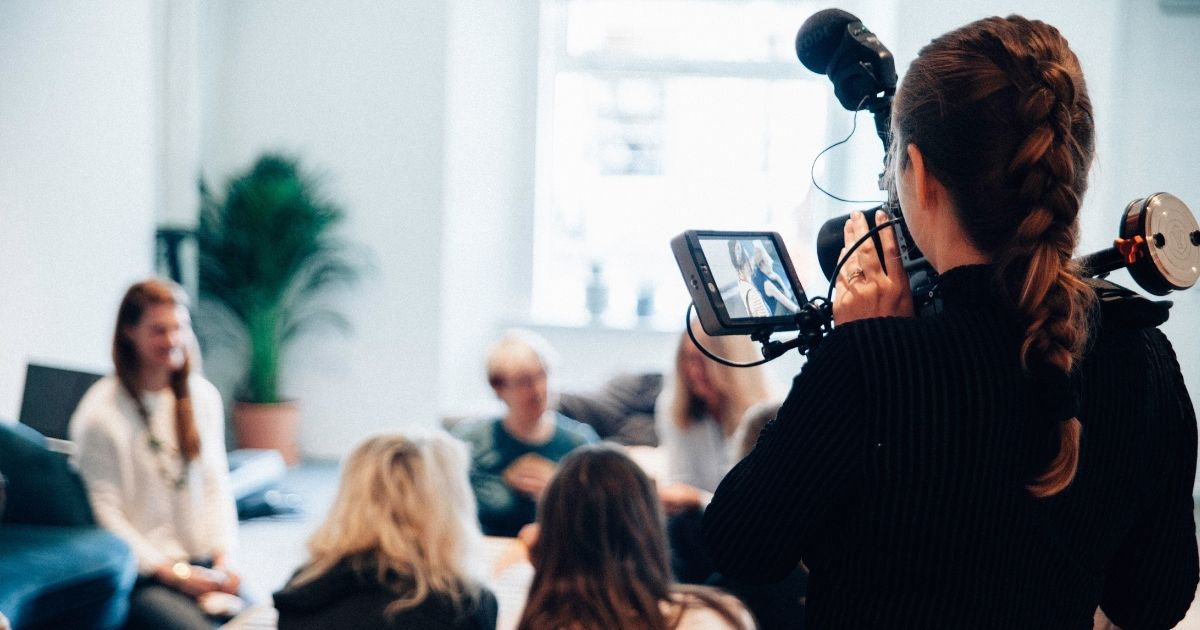Affordable Professional Video Conferencing Setup
Meeting over the Internet simply offers too much of a competitive edge over in-person travel to be eschewed by the business community. If you’re going to be doing business in 2025, odds are a significant part of your communications will be online, and your serious communications will be in the form of video conferencing.
Table of contents
- Imagine the difference
- First case
- Second case
- Which of these do you want?
- Essential Video Conferencing Hardware
- Professional video production capability on a budget
- Camera options
- The SQ11 camera
- The Logitech StreamCam
- Sony ZV-1
- Displays
- Microphones
- Blue Snowball
- Samson Q2U
- Shure MV7
- Speakers & Headphones
- Internet connection
- Optional extras
- Good lighting
- Green Screens
- Dedicated video capture software
- Closing summary
Video conference rooms are the new board rooms.
Imagine the difference
From a business-call perspective, consider two following user cases for someone who attends an online business conference. Consider the topic to be something serious, like a potential merger or acquisition.
First case:
Someone attends the meeting on their phone. They don’t have a stand for their phone. They’re trying to hold it, or awkwardly propping it up on things at their desk. The camera is tilted practically up their nose.
There’s a really tinny sound to them when they talk because they’re using their phone’s onboard microphone, and sometimes you hear other people talking through them because they’re also simultaneously using their phone’s speakers.
Their internet connection is on wifi, and they lag. The bitrate makes them look pixelated and sometimes they cut off mid-sentence, or think you cut off due to their connectivity issues– which people actively spend meeting-time troubleshooting.
“Is it me, or is it you? Can you hear me? Hello? Ok. I think it’s on your end.” – We’ve all heard that exchange happens before, and it inevitably happens regardless of how important the meeting topic may or may not be when there are connection issues.
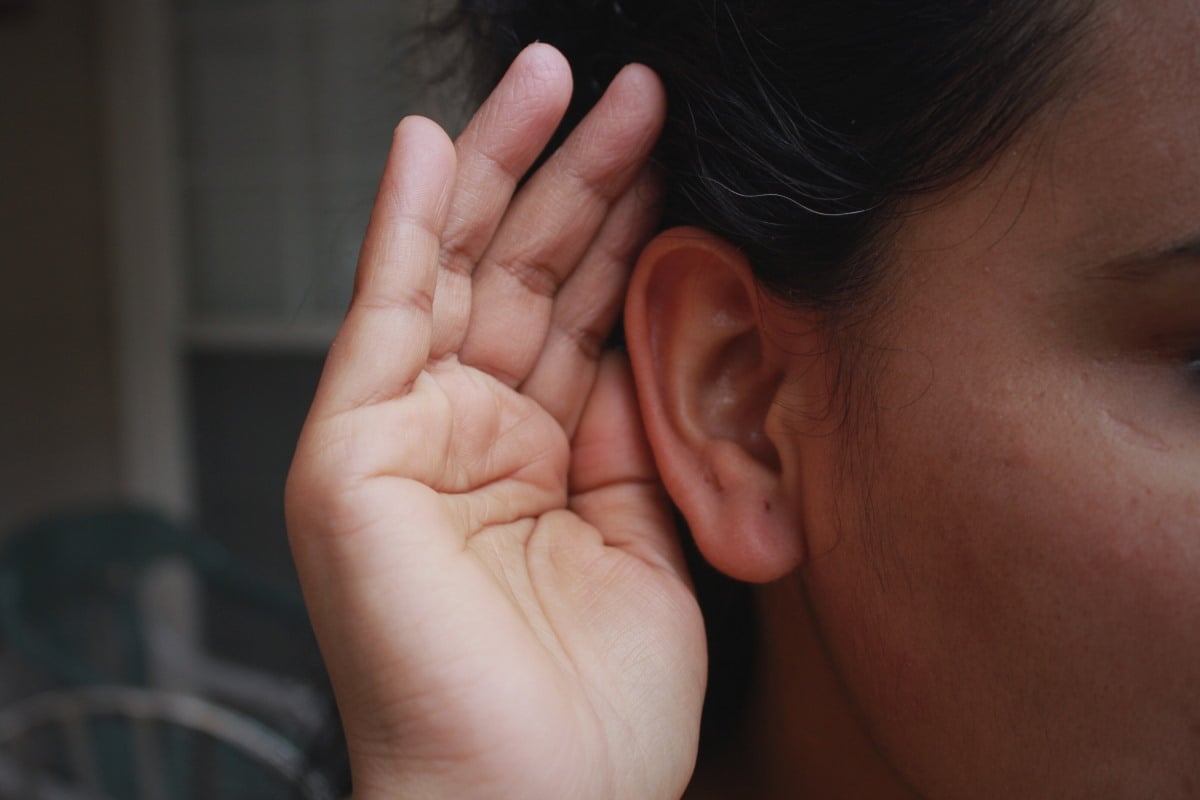
Second case:
Someone attends the meeting on a desktop. They use a dedicated video camera with HDMI out that delivers crisp, HD video. They have an off-screen diaphragm mic that picks what they say up the same way you would hear them if you were in the room with them.
Behind them is a very well-styled backdrop. Is it just how their house is? Or is it a green screen backdrop? You can’t tell.
They never lag, and best of all you actually forget everything about the platform or communication method and assume you’ll just talk to them in a way that feels natural. Then it turns out they have a presentation to go through for the meeting and you’re reminded that this is in fact on computers.
They carry the meeting through a virtual CAD tour of what the meeting was discussing, and then they share the file with the room so everyone has a copy.
Everybody leaves the meeting mentally prepared and technologically equipped to move forward.
Which of these two cases do you want?
The other thing to recognise is that it’s actually a spectrum of what’s possible. Every level of preparedness also exists between those two extreme examples of participation in video conferences.
While video conferencing software platforms may vary, video production from a hardware equipment standpoint has a few elements that it will always have for what makes the best video conferencing equipment bundle.

Essential video conferencing equipment:
- Video Camera
- Display
- Microphone
- Speakers/headphones
- Internet connection
- Good lighting
- Green screens
- Production software
The essentials of video conferencing hardware can all be met from a laptop, or a phone. If your concern is only being able to do video conferencing, then a phone or laptop may be able to suffice. Usually, though, these types of devices will allow you to just attend meetings rather than host or co-host them.
The problem isn’t being able to do video conferencing to the bare minimum standards. The challenge is being able to do professional video conferencing on a budget.
Professional video production capability on a budget
While phones and laptops have everything you need to attend a video conference in one package, the essence of professional setups is taking every element of video production and making it a distinct product, which all ties together into one production stack.
Let’s break down each of these elements and explore what the possibilities actually are.
Camera options
It’s important to know that options change over time, so it’s good to have a general understanding of what parameters make a good camera option before we dive right into what cameras are currently on the market that make a good option for video conferencing professionally on a responsible budget.
Cameras have two main specifications that really matter. Frame-rate, and resolution. To look good, video cameras have to have a frame rate of at least 30fps, or frames per second. To look great, they should shoot for 60fps.
The resolution gets a little more confusing to read the specifications on. Technically resolution is a display output, in lines of resolution, at some aspect ratio. Commonly, you’ll see numbers like 720p, 1080p, 2k, or 4k. The term “HD” is just marketing flair that’s supposed to mean high definition. But that’s completely arbitrary; 720p was once considered the cutting edge of high definition, and is still considered HD for mobile devices.
Another common thing that can be confusing is that sometimes digital cameras will list their megapixel count. Megapixels are how fine and detailed the camera’s actual light sensor is. While megapixels aren’t everything, it’s certainly an important factor in how a camera will perform. More megapixels are a good thing.
Then something not to forget about is actually interfacing options. In order to have great video conferences, you do need to have your camera connected to your computer in some way. Typically, the easiest option is USB. Some cameras try to connect over wifi, or only output via obscure forms of HDMI… and that can be a mess. You’ll honestly want to avoid all that and look for USB out. Hopefully USB 3.0, but anything after USB 2.0 will work
Lastly, we need to talk about price. While price and performance are correlated, it is absolutely not true that a more expensive camera will always be better. The cameras put into modern phones are of exceptional quality, and as components to phone manufacturers, these cameras cost only a few dollars before Apple had Foxconn solder a camera module into the latest generation iPhone. This exists alongside cameras that objectively perform worse than cell phones that cost in the $1,000’s of dollars range. Technology tends to improve over time, options change, the supply line is complicated, and price is not an iron-clad law of performance.
Now, let’s discuss some excellent options that we can honestly recommend.
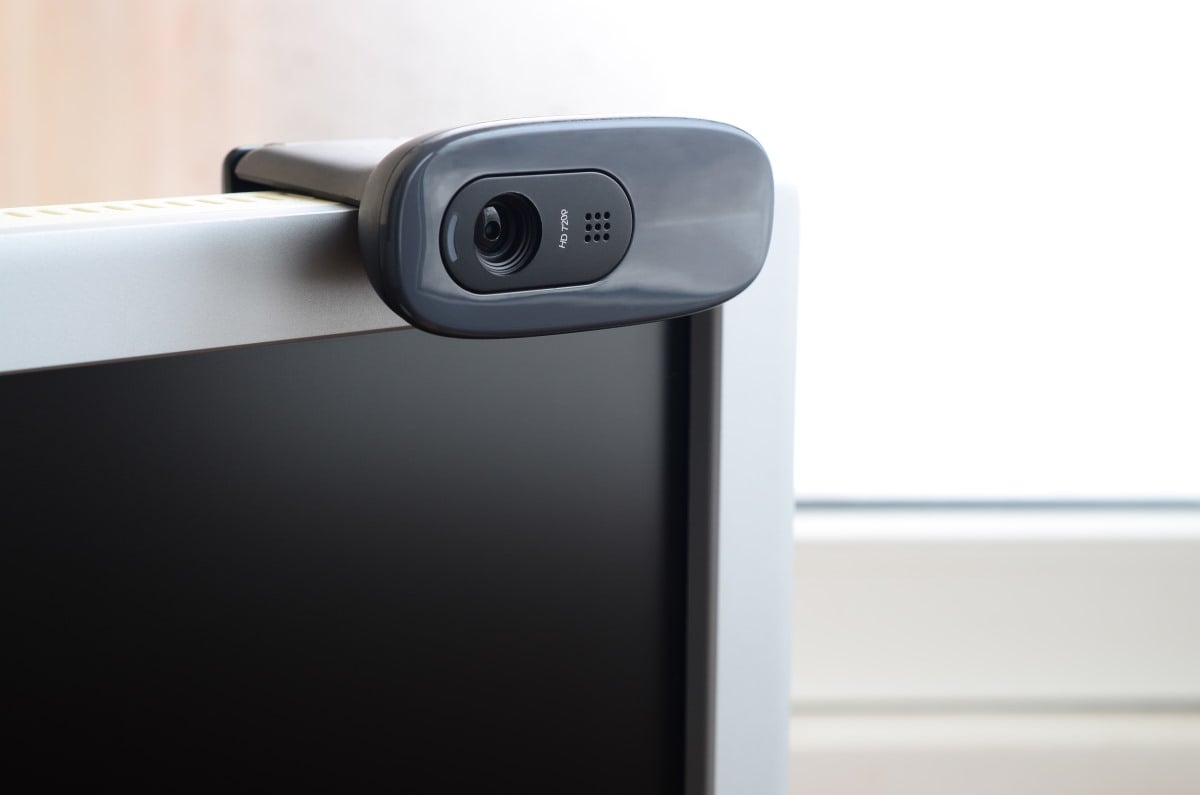
- Bare minimum but still good!
The SQ11 camera is a solid camera that outputs 1080p and is reliably under $20. It has a USB interface so you can use it as a webcam! There’s a plethora of vendors that sell these camera modules and equally many uses for them. People use them for drones, security cameras, back-up cameras for cars… all sorts of things due to the low cost and decent performance of this dirt-cheap camera module. It even has an onboard microphone! (Not recommended to use its microphone, though.) It also comes with mounting points for tripods and other equipment.
- Intermediary option for professional live streaming.
The Logitech StreamCam is a very popular option with content creators. It’s actually built and marketed just for live-streaming equipment, so comes with all the design features to make it easy to work with for anyone wanting to use it for that purpose. Think of it as being noticeably better than the SQ11 at streaming, but for about 5-8x the price, coming in at $100-160. The main quality measure of the StreamCam is 60 fps output, which the SQ11 is not able to do.
- Serious option
Sony ZV-1 is an option that’s made for content creation like vlogging. At over $700, it’s more of an upgrade option for people who have already been into content creation and are starting to take off rather than an entry-level option.
By no means is this an exhaustive list of viable camera options for live streaming– but it serves to show a good range of examples of what’s out there that will work.
Displays
The display is how you see the other participants of the meeting. Usually, a computer monitor is what’s assumed here– and 90% of the time that’s absolutely adequate. Occasionally though, you may consider using a TV to accommodate conferences if there’s going to be a pretty big number of guests, or if you are going to have multiple people attending from one computer.
Anything that you’re comfortable with is what’s most appropriate here. There are practically no wrong answers.
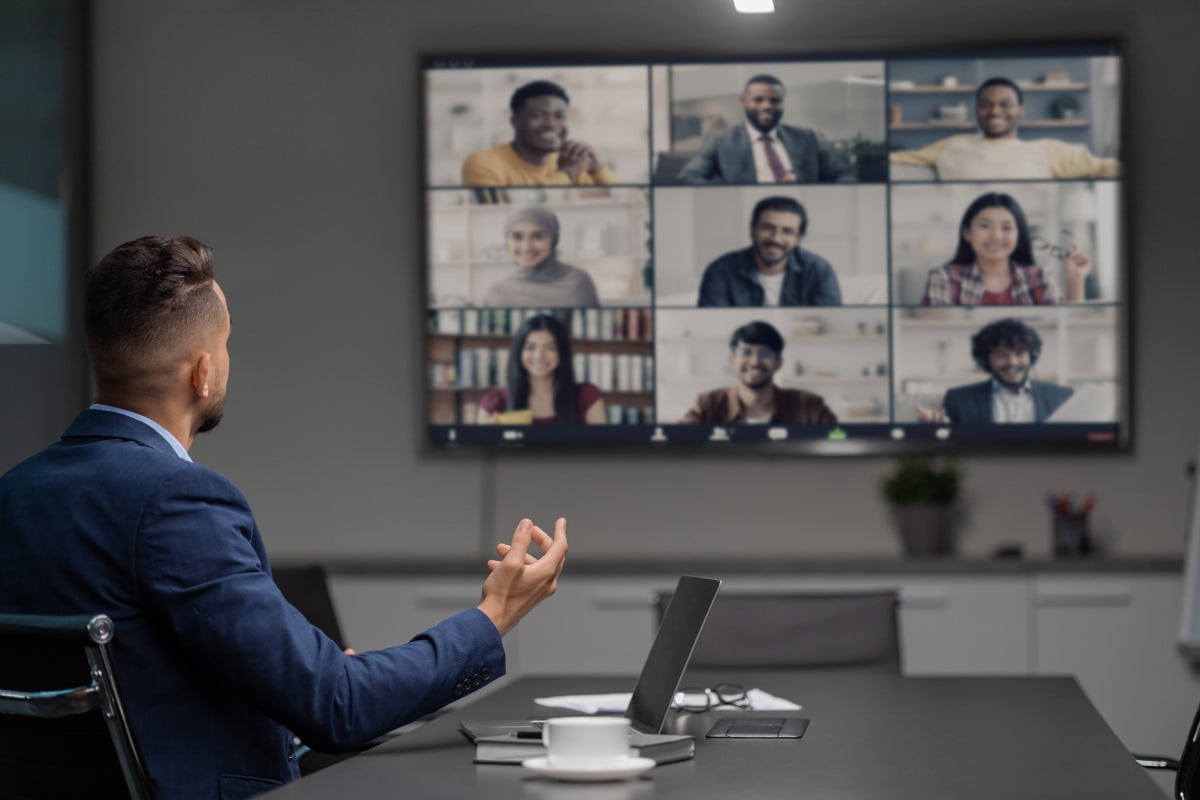
Microphones
Microphones come with fewer specs that you have to worry about than cameras do; there’s fundamentally less going on with a mic than with a cam. Most devices that have a camera, also come with an onboard microphone as well. Almost invariably, you do not want to use any of those on-board microphones for live streaming or video conferencing. You want to use a dedicated microphone.
That said, microphones, like anything, do get very technical. There are frequency response charts, condenser vs dynamic microphones– and lots of subjective opinions from enthusiasts. For the purpose of live streaming, you just want something that sounds clear from a distance so that you don’t run the risk of nudging your microphone. So, the less you have to deal with, the better.
The only other catch with microphones is that you do want one, again, that uses a USB interface. A lot of microphones that are very good use XLR, or ¼”, or other funky interfaces that assume that you’ll be plugging them into an audio mixer. While that *is* something that you could do and might want to consider, if you plan to have multiple people live streaming from one computer, USB microphones will typically be what you’re looking for, unless you want to rig up a physical board room for virtual conference capability.

Let’s look at some microphone options that may suit you.
- Beginner viable option:
Blue Snowball. This is a USB microphone that picks up voice very well and sounds good from a distance. It’s usually about $40, and it ships in its own stand.
- Another option worth considering:
Samson Q2U. This microphone is another good example since it’s decent quality and also can work with XLR, or its own USB interface, making it very versatile. It typically does not have as much range as the Blue series microphones, so you will have to get closer to it in order to take advantage of its quality. They are usually a bit more than $65 USD, making them still in approximately the same price ball-park as USB microphones, but also able to compete as a professional quality microphone. The Q2U also has a 3.5mm audio jack built into it for the purpose of monitoring how it sounds in real time.
- Professional live streaming / audio recording options
Shure MV7 is the best microphone quality that is available over the USB interface. It comes in at north of $200, and it’s used by podcasters, content creators, etc. It’s also from Shure, who has been dominating the professional audio world since the 1960s. Look at the history of the SM57. The MV7 comes with a handy headphone monitor like the Q2U does.
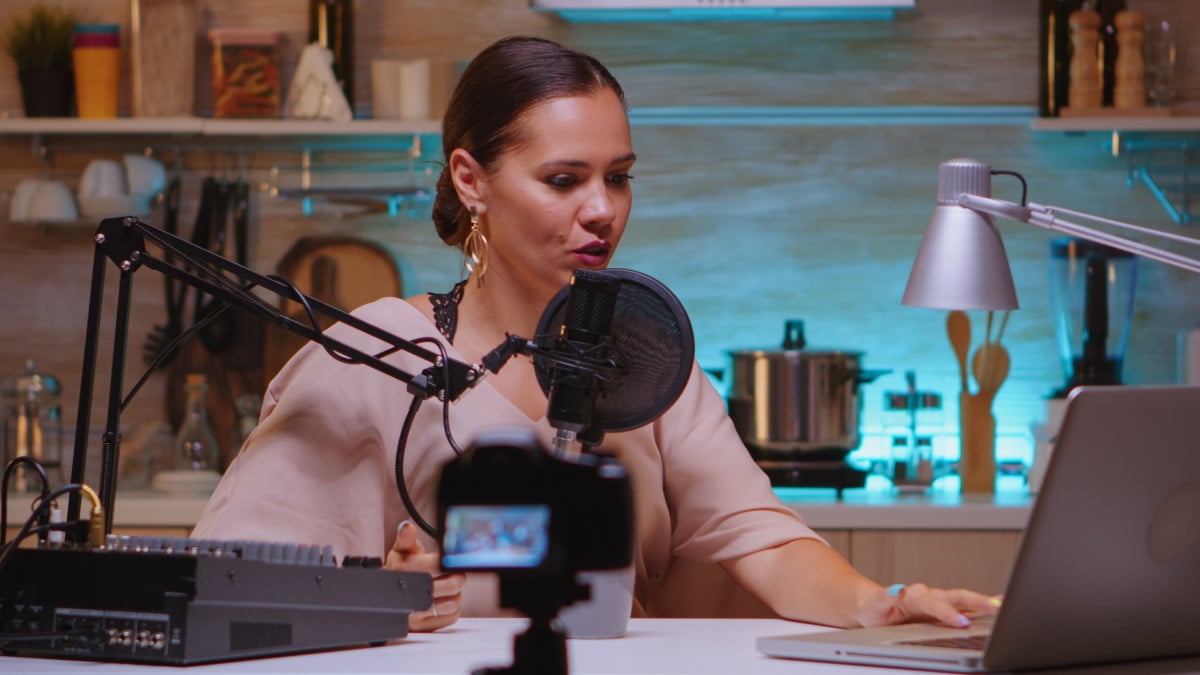
Speakers & Headphones
Most people will use onboard speakers to attend a virtual meeting. While this is comfortable for the attendee, it risks the ubiquitous mic-feedback problem. Even with the best noise cancellation efforts of streaming software, you’ll still usually get stuck with some reverb for using external speakers.
For this reason, it’s recommended that conference attendees use headphones of some kind. They isolate a lot of noise, and they give each attendee a clearer perception of what the other people hear as well.
Since other people won’t actually be affected in any way by what headphones you use, this is mostly preference and some practicality with how you choose to interface with the audio of your device or computer.
Most computers have a 3.5mm audio jack. Most actually have at least two. Also, conveniently, most headphones are designed with a 3.5mm audio plug as their interface point. There are thankfully a lot of adapters for 3.5mm audio to USB. If you use Bluetooth headphones for your phone, you can also use them on your computer with the use of a Bluetooth to USB adapter. You’ll just have to pair your Bluetooth headphones to the adapter once it’s plugged into your computer.
Make sure that you only use them as an audio out, because you could accidentally be using them as your microphone as well. In the settings of your video conferencing software, it will say what speakers and what microphone it is using. There will be a drop-down list of all the different connected devices that it can use for audio out and audio in. This can be a bit tricky and confusing for people to have to troubleshoot.
Internet connection
The internet connection is a hardware element of video production. If at all possible, use a standard ethernet plug for your internet connection. It may be worth investing in a USB hub which includes an ethernet adapter as part of your standard equipment. This way you have a stable, wired connection to the internet which is much less vulnerable to disruptions.
Optional extras
Several optional extras aren’t required but are worth mentioning here– partly to understand that the scope of these roles is, for video conferencing professionally, rather minor– but useful in some circumstances.
Good lighting
Lighting up your face so that the camera can see you is an important role of video conferencing. Just turning on a good desk lamp can do the trick. There are stand-alone products that do this, but understanding lighting is something that people can do intuitively, usually without the need for bulky specialised equipment.
Green screens
The real reason to consider using a green screen is for privacy reasons. Most people do video conferences from home, and managing a real background can potentially be distracting, or a little embarrassing. A green screen provides a barrier that you can use between your professional life and your personal life. They are fairly affordable. If you opt to get a green screen though, go for a screen that can be extended horizontally, and has two poles. These are much more flexible and easy to fully position without running into issues, and they tend to be harder to tip over than the ones with just one pole holding a horizontal bar.
Dedicated video capture software
In many cases, this will not be required, because modern video conference software typically manages live video being produced from your device quite well. Many even auto-detect green screens, apply back-drops, do noise cancellation, and more. Best of all, modern video conferencing solutions do most of this technical work in the background without you even noticing.
However, for production reasons, you may consider taking the actual software stream of audio and video back as a control point in your production stack, if you’re very particular about exactly how you want to handle your streams.
For this, your best practical option is either regular OBS, or potentially OBS with StreamLabs, or SLOBS.
It’s important to underscore that these are not conferencing solutions. They are video capture software that conferencing software can use but doesn’t have to. But, if you want the best video conferencing equipment; these are additional options to consider.
Closing summary
What ultimately defines professionalism in the modern world of business video conferencing is preparedness. Hardware equipment does play a role in being prepared. But it isn’t everything.
You can be adequately and professionally prepared to attend a video conference with just a stand for your phone, and some earbuds with a decent onboard microphone, in a well-lit spot with good wifi reception. It’s also possible to have all of the bells and whistles but come off as unprepared.
Some pieces of hardware or equipment are versatile enough to be honestly recommended to anyone who does live streaming in any capacity.
The SQ11 camera is so cheap and versatile that it’s going to be usable in some situations. (It even fits on a keychain). The Samson Q2U is a great microphone that can be used in USB or XLR interface formats. A good pair of 3.5mm corded headphones or earbuds that you like, so that you never run out of battery life if a meeting goes long, a 3.5mm audio to USB adapter, and a USB hub which includes an ethernet adapter are all handy devices to have around if you are interested in live-streaming at any capacity.
Video conferencing is always going to have technically challenging elements to it, regardless of how you approach it. This is why it’s important to choose video conferencing software that you can reliably get help with. The software is, ultimately, what connects users together.
Digital Samba aims to eliminate as much of this potential for technical difficulties as possible. Most importantly, Digital Samba is here to help and offer support. Are you considering getting into live video conferencing professionally? Have you talked to a technical expert about what you envision yourself doing?
Share this
You May Also Like
These Related Stories
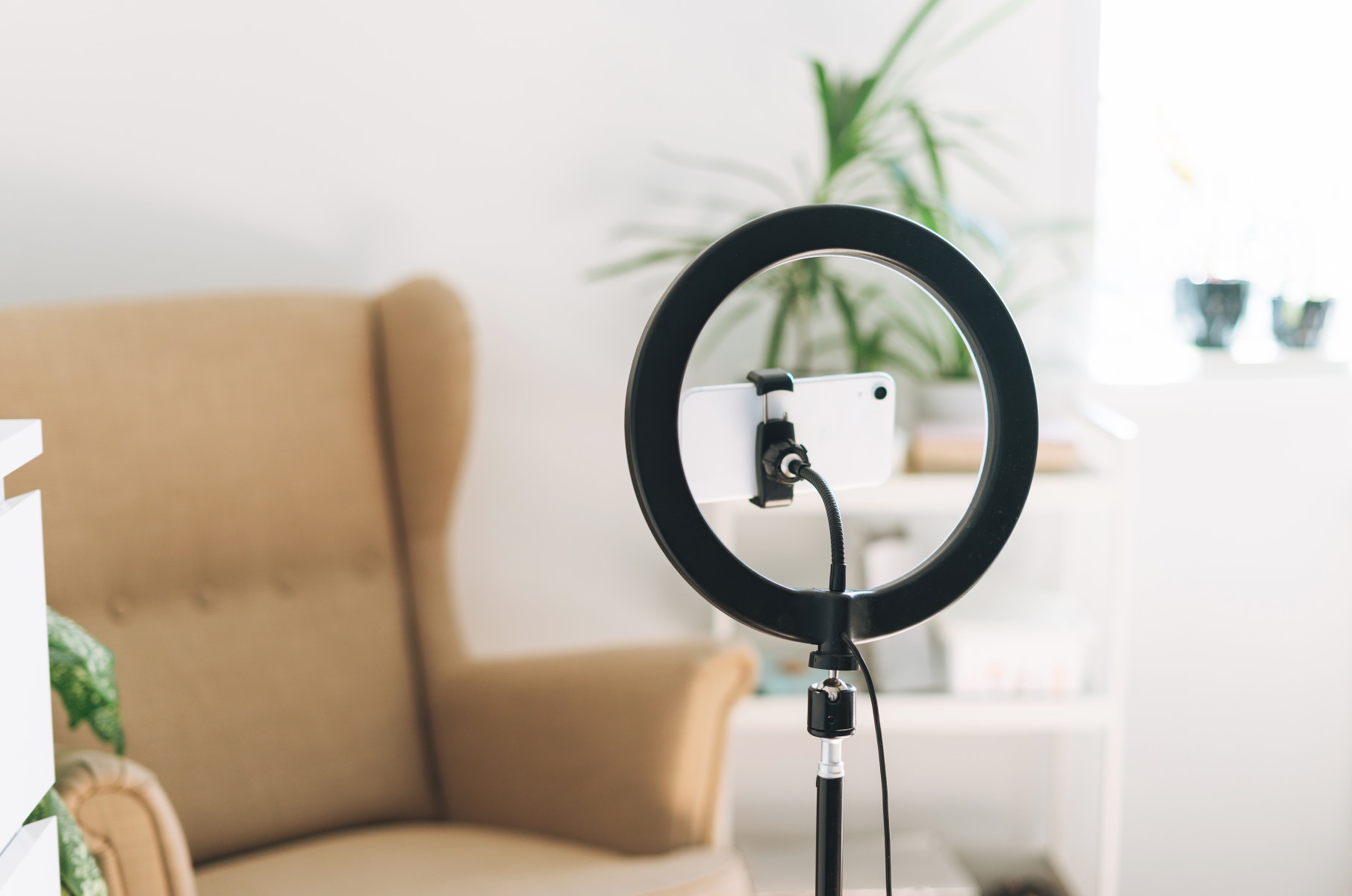
Lighting Tips for the Best Video Conferencing Setup at Home
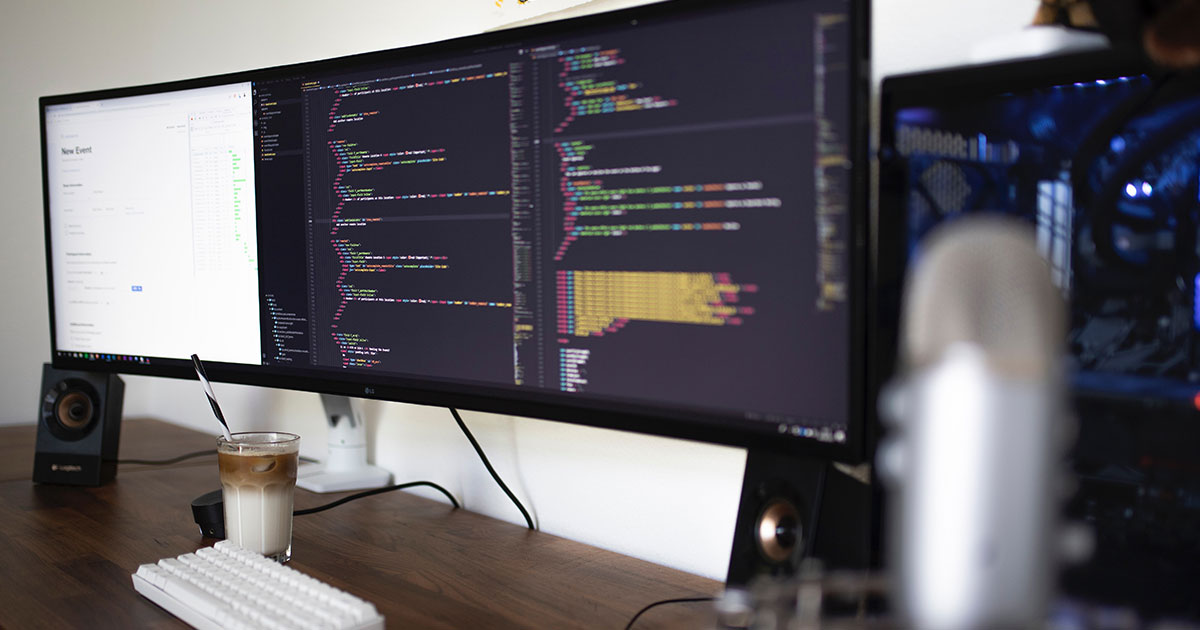
How to live stream an event to Facebook or YouTube
